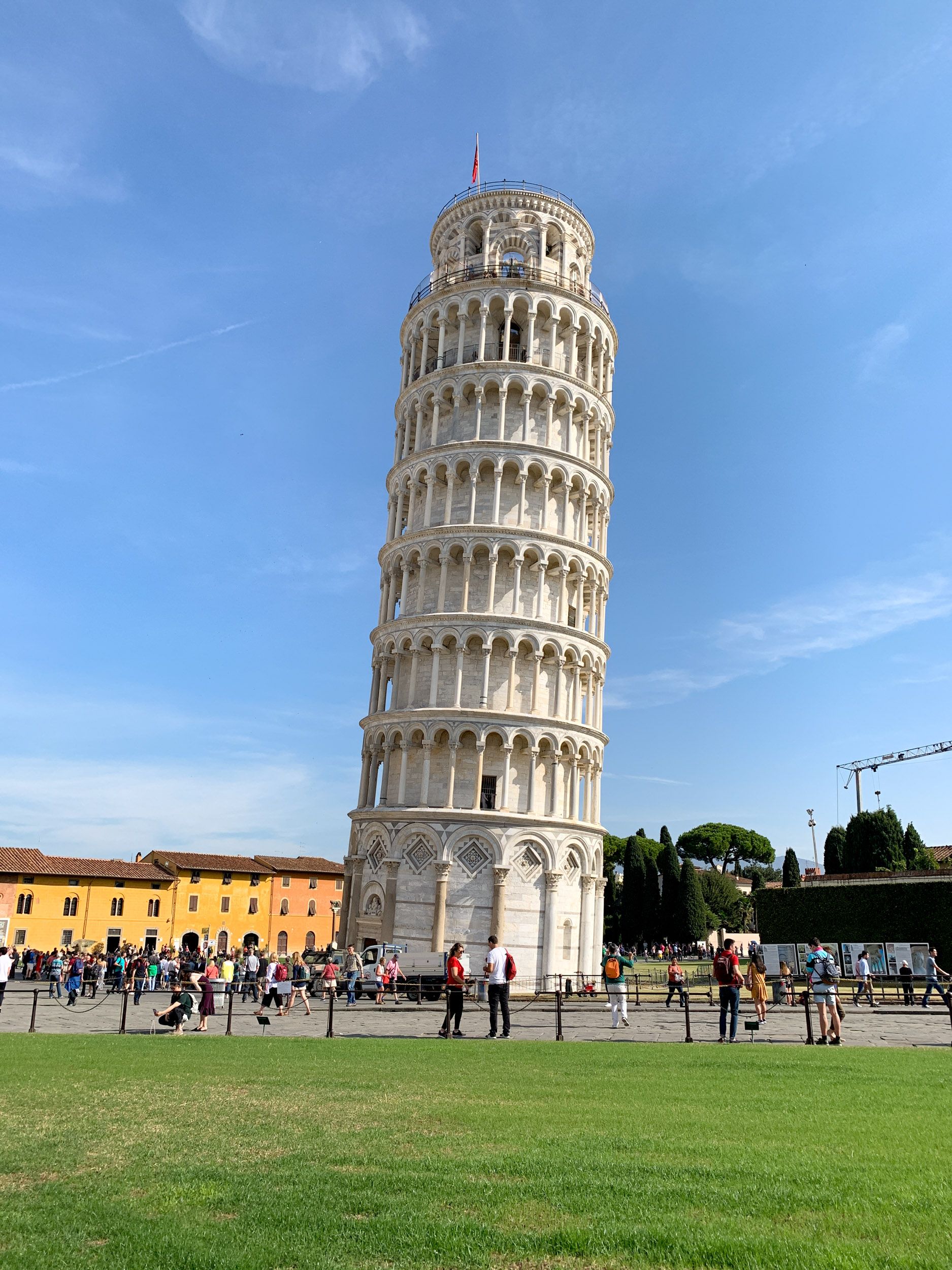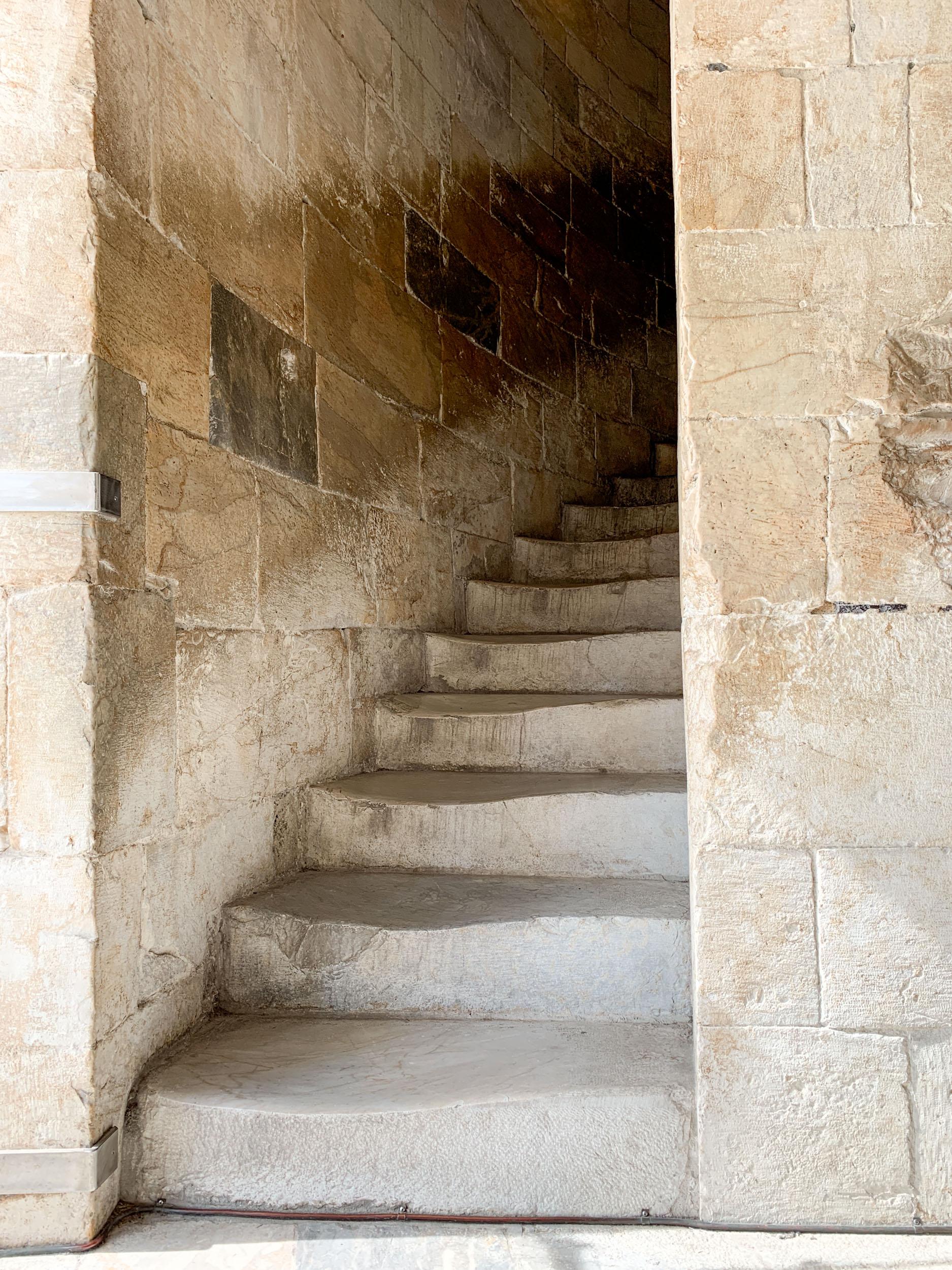
The Leaning Tower of Pisa is a symbol of Italy and as recognized as the Colosseum in Rome.
I'd been to the latter on my first backpacking trip to Italy twenty years ago, so after attending the 2018 Adventure Travel World Summit in Montecatini Terme, I spent my last day in Tuscany visiting Pisa.
The train ride took a little over an hour. I was able to get off at the Pisa S Rossore station, and from there, it was about a five-minute walk.
If you're coming from Florence or Rome, you'll get off at the Pisa Centrale station and have a 25-minute walk.
Tip: Avoid lines with a reserved entrance ticket. GetYourGuide is an authorized seller for Tower of Pisa tickets.

Table of Contents
Arriving at the Piazza dei Miracoli
The view entering the Piazza Dei Miracoli (Square of Miracles) from the west is beautiful.
Everything is nicely lined up to see and photograph, with the round Baptistry in the foreground, Cathedral in the middle, and Campanile (tower) leaning off to the right in the back.
The walls of the Cemetery can be seen on the left (northern) side of the piazza.
Unlike the Duomos I'd recently visited in Milan and Florence, this one was made all the more beautiful on account of the setting. The green space makes for prettier views and pictures.
Tourists aren't allowed on the grass, and most people were respectful of this rule. However, I saw a few people picnicking for lunch.
A small metal fence runs the length of the piazza on the southern side, and this is where most tourists pose for trick shots to make it seem like they're holding up the leaning tower.
Why Does the Tower Lean?
Construction on the Leaning Tower of Pisa began in August 1173.
After five years and just two stories, the tower had already begun to lean. A shallow nine-foot (three-meter) foundation and soft soil beneath it are the primary culprits.
The tower sat unfinished for nearly 100 years while Pisa was at war with other cities in the region. This time allowed the soil to settle and strengthen.
Amazingly, when engineers resumed work in 1272, they adjusted their designs to compensate for the unexpected lean.
The seventh floor was completed in 1319, and the bells on top were added in 1372.
Will the Tower Eventually Fall Over?
Maybe. Multiple efforts have been made to stabilize it, the last of which lasted from 1990 to 2001.
The lean was reduced from 5.5 degrees to 3.97 degrees, a total correction of 17.7 inches (45 centimeters).
Following their work in 2001, engineers declared the Leaning Tower of Pisa should be stable for another 200 years.
Despite several big earthquakes over the years, the tower has remained standing as the same soft soil that causes it to lean also acts as a shock absorber to protect it against seismic activity.

Climbing the Leaning Tower of Pisa
Not knowing what the crowds might be like at one of Italy's star attractions, I booked a ticket in advance to climb the Leaning Tower of Pisa.
All I had to do was line up outside the tower 15 minutes before my scheduled entry time.
When it was my group's turn, each of our tickets was scanned, and we were ushered into the tower.
The inner core is hollow and undecorated; there's not much to see when you look up.
Once everyone was inside, we were given the green light to start walking up at our own pace.
I found it interesting how well worn the steps are in the Leaning Tower of Pisa.
I wondered how many millions of people had walked up the same 251 steps over the last 700 years.
On top, I was treated to 360-degree views of the city and surrounding countryside.
The most exciting view was the one of the Cathedral and Baptistry.

Cathedral of Santa Maria Assunta (Pisa Cathedral)
Like many visitors, I primarily came to Pisa for the Leaning Tower.
The Pisa Cathedral was an afterthought. However, my attitude changed as I walked up to the facade, with distinct blind arcades on the upper levels and sculpted bronze doors below.
Unlike the Tower, which took centuries to complete, the Cathedral was constructed in just 30 years, between 1063-1092.

The interior is incredible. I was stunned by the craftsmanship of the gold coffered ceiling.
The original wooden ceiling was destroyed in a fire, and this elegant replacement was added by the powerful Medici family in the 16th century.
Cathedral entrance is free and included with a Tower ticket.
Pisa Travel Tips
How to Get to Pisa
Booking train tickets online is easy at Trenitalia.com, or you can use a Eurail pass if you have one.
The train ride to Pisa is a little over an hour from Montecatini Terme, an hour and a half from Florence, and two and a half to three and a half hours from Rome.
Hostels and Hotels in Pisa
Search Hostelworld for the best hostels in Pisa
Search Booking for the best prices on any accommodation
Dave is the Founder and Editor in Chief of Go Backpacking and Feastio. He's been to 66 countries and lived in Colombia and Peru. Read the full story of how he became a travel blogger.
Planning a trip? Go Backpacking recommends:
- G Adventures for small group tours.
- Hostelworld for booking hostels.


